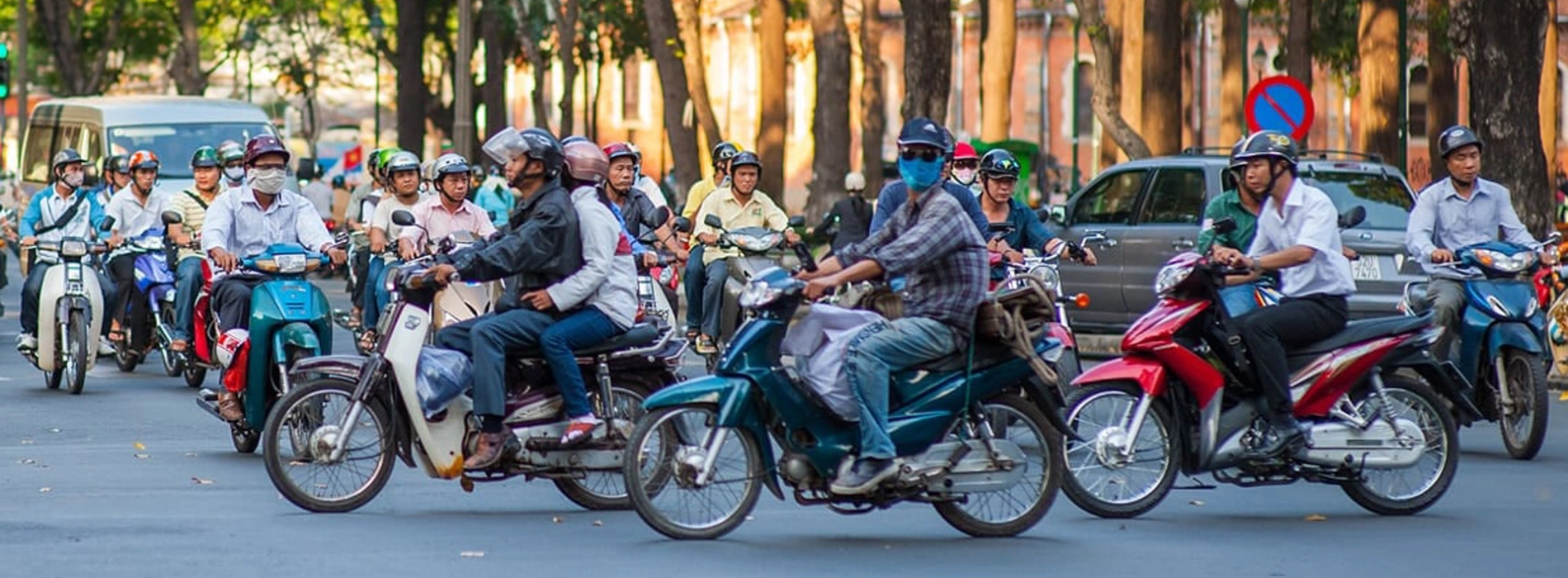Created by Nhung Pham at 2024-01-10 10:42:45
,
Updated by Mai PHAM at 2025-04-24 07:12:16
At the heart of Vietnam's transportation network are motorbikes, omnipresent on bustling city streets and rural lanes alike. These nimble two-wheelers epitomize the spirit of Vietnamese mobility, providing locals with an efficient means of navigating through traffic-laden urban centers and tourists with an exhilarating mode of exploration.
Type of transportation in Vietnam
Transportation in Vietnam is a multifaceted system that seamlessly combines traditional and modern modes of travel, reflecting the nation's rich cultural tapestry, diverse landscapes, and evolving urbanization. Here's a more detailed exploration of the types of transportation in Vietnam:
1. Motorbikes:
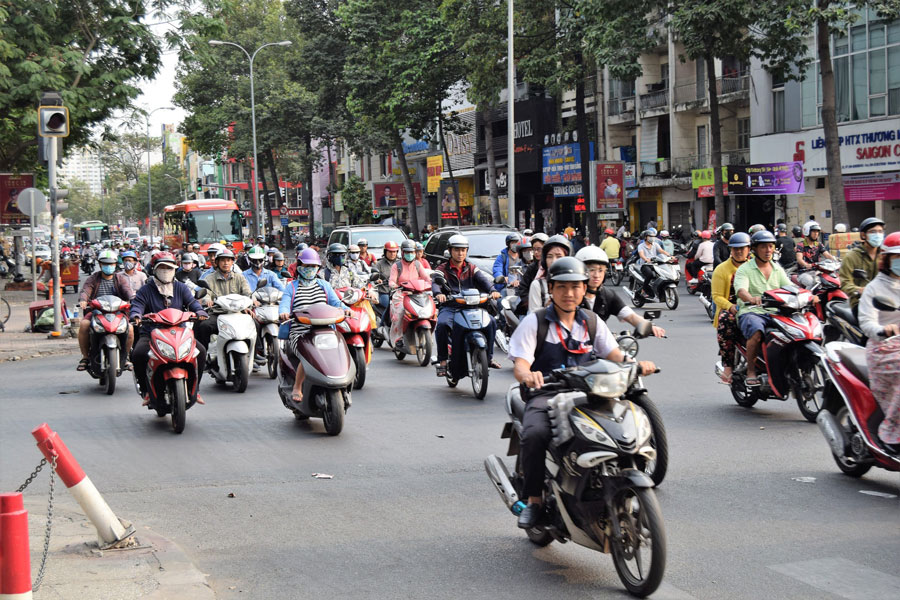
Motorbike in Vietnam
- Description: Motorbikes are the backbone of transportation in Vietnam, embodying the spirit of mobility and adaptability.
- Characteristics: These two-wheeled vehicles are cost-effective, fuel-efficient, and well-suited for navigating through the intricate web of traffic in bustling cities. Motorbikes also provide a thrilling and immersive experience for tourists exploring both urban and rural areas.
2. Bicycles:

Charming Vietnamese girl on a bicycle
- Description: Despite the rise in motorization, bicycles maintain cultural significance and practical utility in Vietnam.
- Characteristics: Commonly used in rural areas and smaller towns, bicycles offer an eco-friendly means of transportation, allowing users to leisurely explore their surroundings and engage with the local community.
3. Cars:

Car in Vietnam
- Description: Car ownership is on the rise, particularly in urban areas, representing an aspirational shift in transportation preferences.
- Characteristics: Cars provide comfort and convenience for longer journeys and explorations. However, challenges such as traffic congestion, especially in major cities, can impact the overall efficiency of this mode of transportation.
4. Public Buses:

Public buses in Vietnam
- Description: Public buses serve as a vital component of urban and inter-city transportation networks.
- Characteristics: Affordable and accessible, buses cater to both locals and budget-conscious tourists. However, varying schedules and crowded conditions during peak hours can be considerations for users.
5. Cyclos and Xe Om:
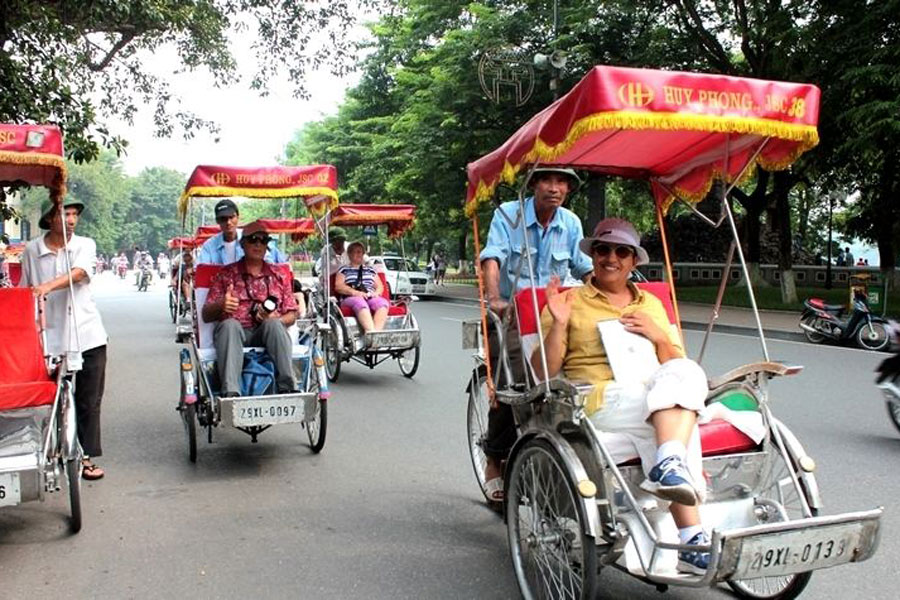
Cyclos in Vietnam
- Description: Cyclos, three-wheeled pedal-powered vehicles, and Xe Om, motorbike taxis, offer unique and localized transportation experiences.
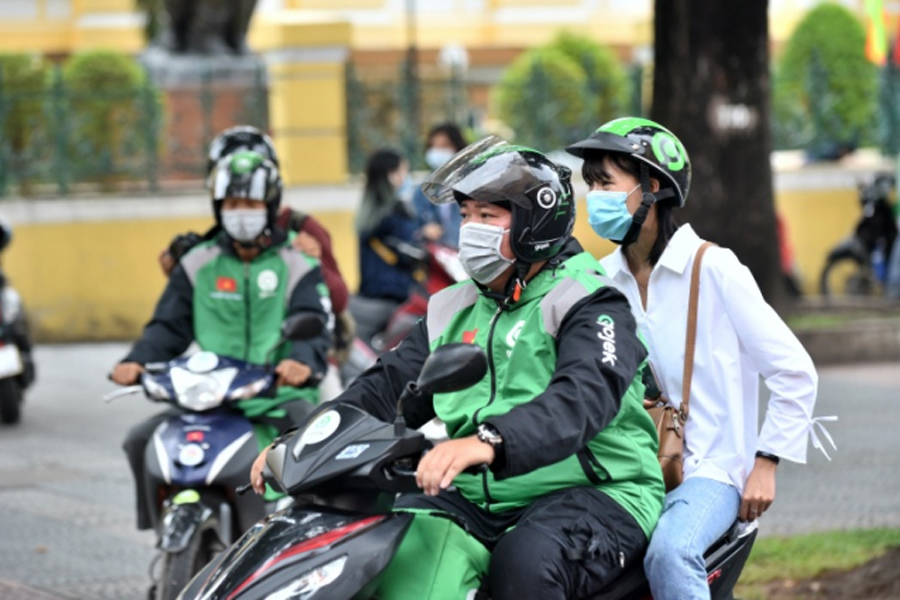
Xe Om in Vietnam
- Characteristics: Cyclos provide a relaxed and scenic means of exploring city streets, while Xe Om offers convenient short-distance travel, with fares typically negotiated between the passenger and the driver.
6. Taxis:
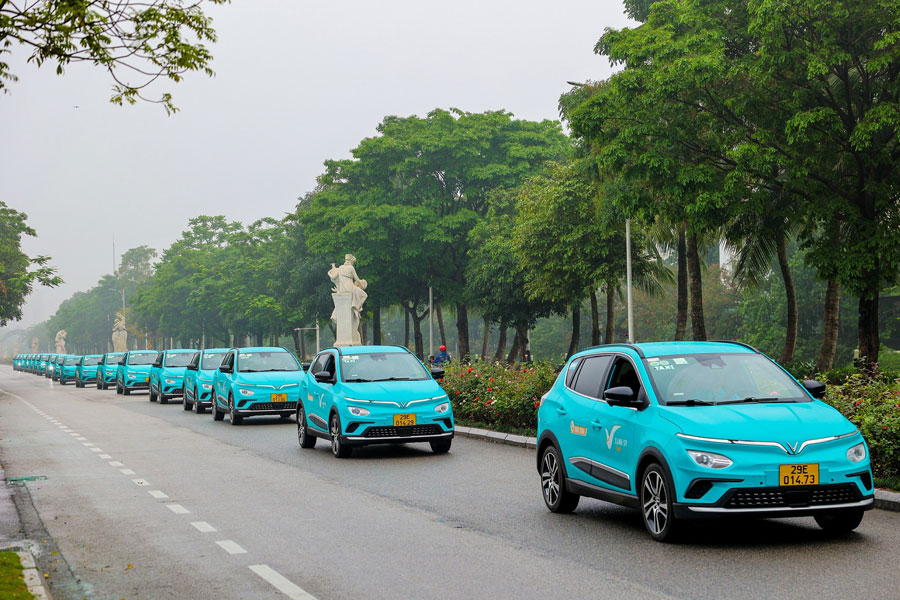
SM Taxis Vietnam
- Description: Taxis are readily available in urban centers, offering a comfortable and efficient alternative to public transportation.
- Characteristics: Choosing reputable taxi companies is advisable, and it's common to insist on using the meter to ensure fair and transparent pricing.
7. Trains:

Enjoy Vietnam's scenery by train
- Description: Vietnam's extensive railway network connects major cities, providing a scenic and comfortable option for long-distance travel.
- Characteristics: Trains offer various classes, catering to different budget and comfort preferences. The rail system is well-developed, and journeys often showcase the picturesque landscapes of the country.
8. Domestic Flights:

Vietnam Airlines aircraft
- Description: Domestic flights are a time-efficient means of covering long distances, connecting major cities and regions.
- Characteristics: Airlines such as Vietnam Airlines, VietJet Air, and Bamboo Airways operate frequent domestic routes, providing a convenient option for travelers with time constraints.
9. Boats and Ferries:

Ferries in Vietnam
- Description: Boats and ferries play a crucial role in areas with rivers and coastal regions, such as the iconic Mekong Delta.
- Characteristics: Essential for waterway transportation, these modes offer a unique and picturesque perspective of Vietnam's natural beauty, along with connecting communities.
10. Motorbike Tours:

Motobike tour
- Description: Guided motorbike tours cater to adventurous tourists seeking an immersive experience of Vietnam's diverse landscapes.
- Characteristics: Organized by local tour operators, these tours blend adventure and cultural exploration, providing participants with a deeper understanding of the country.
11. Traffic Rules and Adaptation:
- Description: Navigating Vietnam's roads requires an understanding of local traffic dynamics and a willingness to adapt to the unique flow.
- Characteristics: Bold road-crossing strategies may be needed in busy urban areas, and visitors should familiarize themselves with local traffic customs for a safe and smooth experience.
12. Grab and Ride-Sharing Services:
- Description: Grab, a popular ride-hailing service, operates in Vietnam, offering a modern alternative to traditional taxis.
- Characteristics: Recognized for its convenience and transparent pricing, Grab has become a preferred choice for many, especially in urban areas.
13. Infrastructure Development:
- Description: Vietnam continues to invest significantly in infrastructure development to enhance connectivity and accommodate the growing population and tourism sector.
- Characteristics: Modern highways, bridges, and improved public transportation systems signify the nation's commitment to fostering economic growth and alleviating traffic congestion.
Understanding the diverse and evolving transportation options in Vietnam is crucial for residents and visitors alike. Each mode of transportation contributes to the overall tapestry of Vietnam's vibrant and dynamic travel experience, offering a mix of tradition, modernity, and cultural immersion.
You may also like: The second Hanoi Metro Railway opened on August 8th
Vietnam transportation system: How to travel through Vietnam?
Navigating Vietnam's transportation system is an integral aspect of exploring the country's diverse landscapes and vibrant culture. Two key modes of long-distance travel are by plane and by train.
1. By Plane:
Domestic Airports: Vietnam boasts a well-connected domestic flight network, with major airports in cities like Hanoi, Ho Chi Minh City, Da Nang, and more.
Airlines: Prominent airlines such as Vietnam Airlines, VietJet Air, and Bamboo Airways operate frequent domestic routes, providing a quick and efficient means of covering long distances.
Advantages:
- Speed: Domestic flights significantly reduce travel time between major cities.
- Comfort: Air travel offers a comfortable and convenient option, especially for those with limited time.
Popular Routes:
- Hanoi to Ho Chi Minh City: One of the busiest air routes, connecting the capital in the north to the largest city in the south.
- Hanoi/Da Nang to Phu Quoc: Direct flights to the picturesque island of Phu Quoc are popular for beach enthusiasts.
Considerations:
- Cost: While domestic flights are generally affordable, prices can vary, and it's advisable to book in advance for better deals.
- Alternative Options: In certain cases, especially for shorter distances, other transportation modes like trains may offer a more immersive experience.
2. By Train:
Railway Network: Vietnam's extensive railway network connects major cities and regions, offering scenic and comfortable travel experiences.
Classes of Service: Trains provide various classes, including hard seat, soft seat, hard sleeper, and soft sleeper, catering to different budget and comfort preferences.
Advantages:
- Scenic Views: Train journeys offer picturesque views of the countryside and landscapes, providing a unique travel experience.
- Comfort: Sleeper classes allow passengers to rest during overnight journeys.
Popular Routes:
- North-South Railway: Connecting Hanoi in the north to Ho Chi Minh City in the south, this route is a popular choice for travelers looking to witness the country's changing scenery.
- Hanoi to Da Nang: Passing through the scenic Hai Van Pass, this route is renowned for its coastal views.
Considerations:
- Travel Time: Train travel might take longer than flights, making it a better choice for those who prioritize the journey over quick transit.
- Ticket Availability: Booking tickets in advance is recommended, especially during peak travel seasons.
General Tips for Traveling Through Vietnam:
1. Booking in Advance: Whether by plane or train, booking tickets in advance ensures availability and may offer cost savings.
2. Local Advice: Seek advice from locals or travel agencies to get insights into the most scenic routes or hidden gems along the way.
3. Weather Considerations: Be mindful of weather conditions, as they can impact transportation schedules, particularly during the monsoon season.
4. Cultural Experience: Consider combining transportation modes for a more immersive experience, allowing you to interact with locals and explore off-the-beaten-path destinations.
How do you get around in Vietnam with comfort?
Getting around in Vietnam with comfort involves choosing transportation options that align with your preferences for convenience, ease, and a pleasant travel experience. Here are some recommendations for comfortable travel in Vietnam:
1. Domestic Flights:
Advantages:
- Speed and Efficiency: Domestic flights are the fastest means of travel between major cities.
- Comfort Options: Premium classes on airlines like Vietnam Airlines offer added amenities and a more comfortable experience.
Considerations:
- Cost: While flights provide comfort, they can be more expensive than other modes of transportation.
- Airport Transfers: Consider the convenience of airports and the time and cost of transfers to and from them.
2. Private Cars or Chauffeur Services:
Advantages:
- Convenience: Hiring a private car with a driver provides door-to-door service, reducing the stress of navigating unfamiliar roads.
- Comfort: Enjoy a more relaxed journey with air-conditioned cars and the ability to stop at scenic spots.
Considerations:
- Cost: Private cars can be more expensive than other options, but they offer personalized service.
- Traffic Conditions: While private cars provide comfort, they may still encounter traffic congestion in urban areas.
3. Luxury Trains:
Advantages:
- Scenic Comfort: Luxury trains, such as the Victoria Express, offer a blend of comfort and breathtaking views.
- Service Quality: Premium train classes provide a higher level of service and amenities.
Considerations:
- Availability: Luxury trains may have limited schedules or be available on specific routes.
- Booking in Advance: Secure tickets early, especially during peak travel times.
4. High-End Buses:
Advantages:
- Comfort Features: Some long-distance buses offer premium services with reclining seats, air conditioning, and entertainment.
- Direct Routes: Luxury bus services may provide direct routes to popular tourist destinations.
Considerations:
- Scheduling: Check for reliable and reputable bus operators with comfortable services.
- Travel Time: While buses offer comfort, the travel time may be longer compared to flights.
5. Upscale Hotels and Resorts Transportation Services:
Advantages:
- Convenience: Many high-end hotels and resorts offer transportation services for guests.
- Comfort: Enjoy the convenience of door-to-door service in comfortable vehicles.
Considerations:
- Availability: Confirm transportation services with the hotel when making reservations.
- Cost: Some hotels may provide complimentary services, while others may charge a fee.
6. Cruise Services:
Advantages:
- Scenic Waterways: Explore coastal regions and rivers through luxury cruises, offering a comfortable and unique travel experience.
- Onboard Amenities: Cruise services often provide high-end amenities and services.
Considerations:
- Itinerary: Verify the cruise route and stops to ensure it aligns with your travel preferences.
- Booking in Advance: Secure cruise reservations early, especially during peak seasons.
7. Local Tour Operators and Private Guides:
Advantages:
- Personalized Service: Engage local tour operators or private guides for customized and comfortable travel experiences.
- Insider Knowledge: Benefit from local insights, recommendations, and a hassle-free experience.
Considerations:
- Communication: Ensure clear communication with the operator or guide regarding preferences and requirements.
- Cost: While personalized services may be pricier, they offer a tailored and comfortable travel experience.
Remember that comfort is subjective, and what works for one traveler may not suit another. Consider your preferences, budget, and the specific requirements of your journey when choosing transportation options for a comfortable and enjoyable experience in Vietnam. If you have any questions about this topic please contact Asia King Travel immediately for answers as soon as possible.
You may also like: What to Expect from The Most Expensive Train in Vietnam
